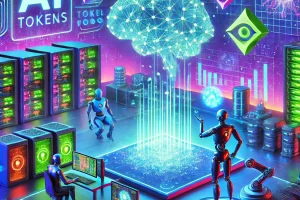The Growing Digital Divide: Technology and Its Impact on Society
In the digital age, while physical distances between people have decreased, socio-economic and technological gaps are widening at an alarming pace. Artificial intelligence (AI), digital production tools, and advanced technologies are transforming lives for some, yet leaving others further behind in the shadows of progress.
Read the full article on modfxmarket.com.
The Inequality in Access to Technology
A privileged minority enjoys access to cutting-edge devices, AI-powered tools, and data-driven insights, enabling them to become exponentially more productive, knowledgeable, and influential. In contrast, a significant portion of the global population struggles to access even basic technology. Factors such as income disparity, lack of infrastructure, and limited education exacerbate this divide, leaving billions without the tools to thrive in a rapidly advancing world.
For those who can access AI, its capabilities enable faster decisions, the analysis of massive datasets, and unprecedented levels of productivity. However, this phenomenon raises a pressing question: how justifiable is this widening gap in intelligence and opportunity?

AI and the Rise of Superiority
AI has become a symbol of power, fostering an environment where those with access can outperform and overshadow those without. This disparity not only amplifies individual productivity but also creates systemic imbalances. The rise of AI-driven superiority forces society to confront critical ethical concerns:
• How equitable is the distribution of AI’s benefits?
• What responsibilities do those with access have toward those without?
Consequences of the Digital Divide
The repercussions of this growing divide extend beyond individual lives, permeating education, the economy, and social structures:
1. Unequal Education: Children with AI-driven learning tools excel, while others are left behind with outdated resources and inadequate opportunities.
2. Economic Disparities: Access to advanced technology allows some to generate wealth, leaving others economically stagnant.
3. Social Fragmentation: As technology redefines interaction, it risks eroding empathy and solidarity, creating a fractured society.
Bridging the Gap
Addressing this divide requires collective effort and multifaceted strategies. Here are actionable solutions:
1. Expanding Universal Internet Access
The internet is no longer a luxury but a necessity. Governments and private sectors must work together to ensure affordable or free internet access for underserved regions. Initiatives like satellite-based internet and community Wi-Fi networks can play a crucial role.
Example: SpaceX’s Starlink aims to deliver global broadband, potentially connecting remote communities to the digital world.
2. Affordable Technology for All
High hardware costs remain a significant barrier. Subsidized programs, refurbished device initiatives, and donation drives can help distribute essential devices like smartphones, tablets, and laptops.
Implementation Idea: Public-private partnerships could fund technology libraries where communities can borrow devices for education or professional use.
3. Enhancing Digital Literacy
Digital tools are only effective if users know how to operate them. Governments, NGOs, and tech companies should invest in programs to teach essential digital skills, such as navigating the internet and protecting personal data online.
Proposed Initiative: A ‘Tech Literacy for All’ campaign providing free training sessions in schools, libraries, and community centers.
4. Ethical AI Development
Tech companies must prioritize inclusivity in AI design, ensuring it caters to diverse populations. Transparency in algorithms and representation in datasets are critical to avoiding the perpetuation of biases.
Policy Recommendation: Governments should enforce ethical AI guidelines to ensure fairness and accessibility.
5. Supporting Local Innovation
Empowering local entrepreneurs fosters region-specific solutions. Investments in small businesses and community-driven projects can give marginalized groups control over their digital futures.
Example: Microfinance initiatives for tech startups in underrepresented areas.
6. Strengthening Education Systems
Integrating technology into public education systems ensures that all children, regardless of socio-economic status, receive exposure to digital tools.
Long-Term Goal: Incorporate coding, robotics, and AI into national curricula as mandatory subjects.
7. Corporate Social Responsibility (CSR)
Large tech companies have the resources to meaningfully address the digital divide. Encouraging CSR initiatives that fund digital inclusion projects can drive significant change.
Successful Example: Google’s ‘Grow with Google’ initiative offers free resources to improve digital skills globally.
8. Fostering Global Cooperation
The digital divide is a global issue that demands global solutions. International organizations can facilitate collaborations, share knowledge, and fund infrastructure development in underserved areas.
Key Initiative: Expanding the UN’s Sustainable Development Goal 9 (Industry, Innovation, and Infrastructure) to include specific metrics for digital access.
The Path Forward
While AI and digital tools promise to reshape humanity’s future, unequal access risks deepening social injustices. Technology should be a bridge connecting and empowering all, not a barrier that excludes. Bridging this divide requires collective action—governments, corporations, non-profits, and individuals must collaborate to prioritize equity and inclusivity.
This vision transcends access; it’s about empowerment. Ensuring universal participation in the digital revolution means creating a world where technology uplifts everyone, enabling a brighter and more equitable future for all.















Add Comment